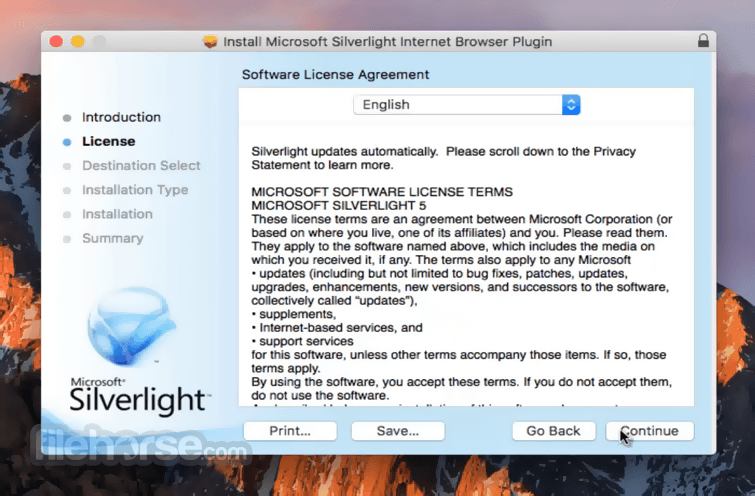
- #How to manually update silverlight on mac software
- #How to manually update silverlight on mac windows
Silverlight parses the XAML content on initialization, and then renders the content as appropriate.ĭigging Deeper: A Note for Those Afraid of JavaScriptĪ few readers might be excited at the idea of using JavaScript to create Silverlight content or applications. In typical Silverlight applications, a XAML file contains a hierarchy of visual elements that must be rendered on the screen. XAML is an XML-based declarative language described in depth in the next chapter. Silverlight 1.0 applications are created with a mixture of XAML (Extensible Application Markup Language), HTML, and JavaScript, so they are easy to integrate into existing web content and compatible with popular Asynchronous JavaScript and XML (AJAX) libraries and techniques. (By default, Silverlight also automatically updates to later versions when they are available.) Silverlight might just be the silver bullet many designers and developers have been waiting for.
#How to manually update silverlight on mac software
And, unlike just about any software that has come out of Microsoft, Silverlight is a small download! Version 1.0 is less than 1.5MB, so users who don't have it can get it pretty quickly when browsing to Silverlight content.
#How to manually update silverlight on mac windows
Yes, the first version of Silverlight is primitive in areas, but it's a true development platform based on concepts and APIs introduced with Windows Presentation Foundation (WPF) in 2006 and in development for many years prior. A promising alternative to Flash, Silverlight enables the creation of rich web content and applications using a lightweight add-on that is friendly to both designers and developers. This is why the introduction of Silverlight is so exciting. Flash (the runtime environment, as well as the tool) suffers from the same basic problem as HTML: Many people are trying to use it for creating rich applications, but it was originally designed for something else (in this case, simple animations). (I just tried, , and, and all three are using Flash at the time of writing.) The Flash development experience leaves much to be desired, however. Chances are you'll find Flash content at your destination. If you doubt the pervasiveness of Flash, try this experiment: Think of a brand of food you eat, and then navigate to the brand's website. Whether someone wants to create a professionally designed website, an online game (or any number of other applications), or even a simple advertisement, Flash has been a natural choice for escaping the limitations of HTML. It's not that these technologies were poorly designed, but simply that they were designed for hyperlinked documents rather than the extremely rich presentations that most people want to create on the Web these days.Ĭonsidering these issues, it's no wonder that Adobe Flash has been so successful. Drawing a simple line, incorporating video, and a number of other things are extremely difficult or impossible with HTML alone. In addition to browser differences, the graphical capabilities of HTML are too limiting for many user experiences that people want to create.

Many techniques and JavaScript libraries have been developed and shared over the years that can reduce this frustration, but none of them are silver bullets. If you care about your content working on most web browsers (or even just Internet Explorer and Firefox), accommodating their differences can be maddening.



 0 kommentar(er)
0 kommentar(er)
